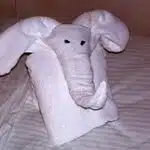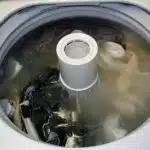A front load washer is a popular household appliance that has revolutionized the way we do laundry. It uses a unique washing system that differs from top load washers and offers several benefits, such as energy efficiency, water conservation, and better cleaning performance. However, to fully appreciate the function and advantages of a front load washer, it’s crucial to understand how it works.
This article aims to explain the technical workings of a front load washer in easy-to-understand terms. From the inner workings of the drum’s rotation and water supply to the use of detergent and fabric softener, we will explore every aspect of this innovative appliance. Whether you’re a curious homeowner looking to upgrade or a technician seeking technical knowledge on washing machines, this guide will provide valuable insights into how a front load washer operates.
Basic Components Of A Front Load Washer
The front load washer is a popular type of washing machine that is widely used in households and laundry facilities. It is designed to clean clothes more efficiently and effectively than top load washers. The basic components of a front load washer include the outer drum, inner drum, motor, pump, and control panel.
One advantage of a front load washer is that it uses less water and detergent compared to a top load washer. This can result in lower water and energy bills over time. However, one disadvantage of a front load washer is that it can be more expensive than a top load washer.
Maintenance tips and tricks for a front load washer include regularly cleaning the door seal to prevent mold buildup, using high-efficiency detergent to avoid excess suds, and balancing the load to prevent vibration during the spin cycle. By following these maintenance tips, you can prolong the life of your front load washer and ensure it operates at its best.
Moving on to the next section, let’s explore how the inner drum rotates inside the outer drum during the wash cycle.
The Inner Drum And Its Rotation
The inner drum of a front load washer is typically composed of stainless steel and is designed to rotate in a horizontal axis. The rotation of the drum is powered by a motor that is connected to a belt or a gear system. The speed of the drum is typically controlled by a switch or timer that can be adjusted to the desired laundering cycle. The force of the motor is transmitted to the drum by a drive pulley, which can be adjusted to increase or decrease the speed of the drum. Additionally, the drum is often attached to a suspension system, which dampens the vibration of the drum and helps keep the washer stable during operation. The speed of the drum is also affected by the weight of the laundry, as heavier loads cause the drum to rotate more slowly.
Inner Drum Design
The inner drum of a front load washer is an essential component that determines the efficiency and effectiveness of the machine. It is designed to provide a balanced and stable rotation during the washing cycle. The balancing mechanism within the drum ensures that there are no unnecessary vibrations or movements that could damage the machine or cause excessive noise.
The material composition of the inner drum also plays a critical role in its performance. Most modern front load washers use stainless steel for their inner drums due to its durability, resistance to corrosion, and easy maintenance. Other materials such as plastic or porcelain enamel may also be used, but they lack the strength and durability needed for long-term use.
Overall, the design of the inner drum is crucial for maintaining the quality and longevity of a front load washer. Its balancing mechanism and material composition must work together seamlessly to ensure efficient and effective cleaning without causing any damage or disruptions. By understanding how this component works, users can better appreciate and utilize their front load washers to serve their laundry needs effectively.
Drum Rotation Mechanics
The efficient rotation of the inner drum is a crucial factor in the overall performance of a front load washer. The drum balancing mechanism and motor power work together to ensure smooth and stable rotations during each washing cycle. The drum balancing mechanism helps distribute the weight of the laundry evenly, reducing vibrations and ensuring that the machine remains stable.
The motor power also plays a significant role in determining the speed and efficiency of the drum rotation. Higher motor power can lead to faster rotations, which can help reduce washing times and improve cleaning effectiveness. However, it is essential to balance motor power with other factors such as drum size, load capacity, and water usage to ensure optimal performance.
Overall, understanding the mechanics behind inner drum rotation can help users choose a front load washer that meets their specific needs. By considering factors such as drum balancing and motor power, users can select a machine that provides efficient and effective cleaning without causing any damage or disruptions. This knowledge can help users serve their laundry needs effectively while still prioritizing practicality and convenience.
Drum Speed Control
The efficient rotation of the inner drum is crucial in delivering an optimal washing experience. To achieve this, motor control and belt tensioning play significant roles in regulating the speed of the drum rotation. The motor power determines how fast the drum rotates, and its capacity to handle different load sizes. This means that higher motor power can lead to faster rotations, reducing washing times and improving cleaning effectiveness.
Drum speed control helps regulate the amount of water used during each cycle, which directly affects energy consumption. By controlling the speed of the inner drum, users can efficiently use water without compromising on cleaning efficiency. Belt tensioning also contributes to smooth and stable rotations during each cycle by maintaining proper alignment between the motor pulley and drum pulley.
In summary, controlling inner drum rotation is essential in optimizing a front load washer’s performance. Motor control and belt tensioning work together to ensure smooth and stable rotations while regulating energy consumption and water usage. Understanding these mechanics can help users select a front load washer that suits their specific needs while providing efficient and effective cleaning without causing any damage or disruptions.
Water Supply And Drainage System
The water supply and drainage system is an integral part of the front load washer’s operation. The automatic system ensures that the right amount of water is supplied to the machine for efficient washing. Water pressure plays a significant role in the system, and it must be regulated adequately.
Water pressure should be maintained between 10-100 PSI for optimal performance of the front load washer. If the pressure is too low, it will not fill up with enough water, leading to improper cleaning. On the other hand, if the pressure is too high, it can damage the internal components of the machine. Therefore, it is essential to check and regulate water pressure before operating the front load washer.
The drainage capacity is also a vital aspect that affects the overall efficiency of a front load washer. It ensures that dirty water is efficiently removed from the machine after washing cycles are completed. The drainage hose must be correctly installed to prevent any leaks or blockages that could cause flooding in your laundry room. Ensuring proper drainage allows for optimum cleaning results while preventing any unwanted messes.
- The water supply line should be connected directly to a cold-water source.
- Check for any leaks before and after use.
- Ensure adequate spacing between the back of the machine and wall for proper ventilation.
- Clean out any debris from drain filters regularly.
Moving on from this section, we will learn about how detergent plays a crucial role in removing stains and dirt from clothing during washing cycles.
The Role Of Detergent In The Washing Process
- Different types of detergent, such as liquid, powder, and pods, are used to optimize the washing process of a front load washer.
- The amount of detergent used should be determined by the size and soil level of the load, as well as the type of detergent being used.
- Manufacturers of front load washers often provide recommended detergent amounts for optimal performance.
- Excessive amounts of detergent can cause sudsing in the washer and result in reduced cleaning performance.
Types Of Detergent
When it comes to washing clothes, the choice of detergent can make all the difference in achieving optimal results. There are various types of detergent available in the market, each designed for specific needs and preferences. One type of detergent is the liquid form, which is ideal for front load washers as it dissolves quickly and easily. Another option is powder detergent, which is great for deep cleaning and removing tough stains.
For those who are environmentally conscious, eco-friendly options are now widely available. These types of detergents use natural ingredients that are gentle on clothes and safe for the environment. They also come in various forms such as liquid, powder or pods. Although they may be more expensive than regular detergents, they offer a sustainable solution to reducing one’s carbon footprint.
It’s important to note that using too much detergent can lead to excess sudsing and potentially damage your machine. It’s recommended to follow the manufacturer’s instructions on how much detergent to use per load. By choosing the right type of detergent for your front load washer and following proper usage guidelines, you’ll ensure that your clothes come out clean and fresh every time without causing any harm to the environment or your machine.
Detergent Amounts
When it comes to doing laundry, the role of detergent cannot be overstated. Detergent is responsible for removing dirt, stains and odors from clothes, leaving them fresh and clean. However, using too much or too little detergent can have adverse effects on your washing machine and the environment. It’s therefore crucial to use the proper amount of detergent when doing your laundry.
Using too much detergent can result in excess sudsing, which can damage your front load washer over time. It can also leave residue on your clothes, making them feel stiff and uncomfortable. On the other hand, using too little detergent may not remove all the dirt and stains from your clothes, leaving them less than clean. To ensure that you’re using the proper amount of detergent for each load of laundry, it’s recommended that you follow the manufacturer’s instructions.
Aside from affecting your washing machine, using too much or too little detergent can also have environmental implications. Overusing detergent means more chemicals are being released into the water cycle, which can harm aquatic life and ecosystems. Underusing detergent means that more water is needed to rinse out the soap residue from your clothes. By using the right amount of detergent per load, you’ll reduce both your environmental impact and water usage.
In conclusion, using the proper amount of detergent is crucial for achieving optimal results in cleaning your clothes while minimizing harm to both your washing machine and the environment. By following manufacturer’s instructions on how much to use per load and being mindful of our environmental impact when doing laundry, we can play our part in serving others by reducing our carbon footprint.
Fabric Softener Dispenser
When it comes to doing laundry, fabric softener is a must-have for many people. It helps keep clothes feeling soft and smelling fresh, but it can be tricky to use properly in a front load washer. That’s where the fabric softener dispenser comes in. This handy feature allows you to add fabric softener at just the right time during the wash cycle.
Pros of using a fabric softener dispenser include the convenience of not having to wait until the rinse cycle to add fabric softener, as well as ensuring that the fabric softener is evenly distributed throughout the load. However, there are also some cons to consider. For example, if not used correctly or cleaned regularly, the dispenser can become clogged and cause issues with your washer.
Proper usage of a fabric softener dispenser involves referring to your washer’s manual for specific instructions on how much fabric softener to add and when to add it during the wash cycle. It’s also important to clean the dispenser regularly by removing it from the machine and washing it with warm water and soap. By following these steps, you can ensure that your clothes come out feeling soft and smelling great every time you do laundry.
| PROS | CONS |
|---|---|
| Convenient | Can become clogged |
| Ensures even distribution | Requires regular cleaning |
With proper usage and maintenance, a fabric softener dispenser can be a useful tool in your laundry routine. The next section will explore another important feature of front load washers: control panels and settings.
Control Panel And Settings
The control panel and settings of a front load washer are essential in determining the nature of the wash. Modern technology has made it possible for washers to have customizable cycles that cater to specific fabric types or soiling levels. The control panel is usually located at the top of the machine, and it contains various buttons for selecting the type of wash, water temperature, spin speed, and other features.
Customizable cycles allow users to tailor their washes according to their preferences. For instance, there may be a cycle specifically designed for delicates or heavily soiled garments. Eco-friendly options are also available, which consume less energy and water than traditional washers. These options not only reduce your carbon footprint but also save on utility bills.
Energy efficiency features are increasingly becoming popular due to their benefits. They help conserve energy by using less power during operation, reducing overall consumption. For instance, some front load washers come with advanced sensors that detect the amount of laundry inside and adjust water usage accordingly. This feature ensures that you use only what you need while still getting a clean wash. In addition, front load washers have been shown to use up to 50% less water than traditional top-load machines, making them an eco-friendly choice for households.
Energy Efficiency Features
One of the main advantages of front load washers is their energy efficiency features. These machines use less water and electricity compared to top load washers, resulting in cost savings for the users. For instance, according to a case study conducted by the US Department of Energy, using an Energy Star certified front load washer could save a household up to $45 per year on utility bills.
However, some front load washers go beyond basic energy-saving technology and incorporate smart features that further increase their efficiency. For example, some models have sensors that adjust the cycle time and temperature based on the amount and type of clothes in the drum. Others feature Wi-Fi connectivity that allows users to monitor and control their washer remotely using a smartphone app. These smart technologies not only save energy but also make laundry day more convenient and hassle-free.
Overall, choosing a front load washer with energy-efficient features can be an excellent investment for households looking to save money and reduce their environmental impact. Smart technologies such as sensors and Wi-Fi connectivity take this efficiency one step further by providing additional cost savings while improving user experience. In the next section, we will explore how different load capacity and size options can further enhance the functionality of front load washers.
Load Capacity And Size Options
When it comes to choosing a front load washer, one of the most important factors to consider is the load capacity and size options available. This will determine how much laundry you can wash at once, and whether or not the machine will fit in your designated space. Typically, front load washers come in sizes ranging from compact 2.5 cubic feet to large 5.8 cubic feet models.
Another important feature to keep in mind is load balancing. A front load washer with an unbalanced load can cause excessive vibration and noise during operation, which can be both annoying and damaging to the machine over time. To prevent this, many modern front load washers are equipped with automatic load balancing systems that redistribute weight within the drum during cycles for a more stable and efficient wash.
Furthermore, another key aspect of front load washer design is its door lock mechanism. Unlike top-load washers that rely on a simple latch or lid, front loaders require a more secure locking mechanism due to their horizontal orientation. The door lock mechanism ensures that the door stays securely shut during cycles, preventing water from leaking out and protecting users from potential injury caused by opening the door mid-cycle. Overall, these features combine to make front load washers a reliable and efficient choice for any household’s laundry needs.
Moving on to another essential aspect of front-load washing machines is noise reduction technology – an important consideration for those who live in apartments or have small children sleeping nearby.
Noise Reduction Technology
Imagine sitting in a serene garden, listening to the gentle rustling of leaves and the chirping of birds. Suddenly, a construction site across the street disrupts the peace with its loud machinery. Similarly, when operating a front load washer, excessive noise can disrupt the tranquility of a household. Noise reduction technology has been developed to address this issue.
Noise reduction technology is an essential feature in modern front load washers. It utilizes vibration control mechanisms to minimize noise during operation. The technology is designed to reduce vibrations caused by the spinning drum and motor that can produce unwanted noise.
Here are four specific ways that noise reduction technology operates in front-load washing machines:
- Special suspension systems are used to stabilize the drum and reduce vibrations.
- Sound-absorbing materials are incorporated into the machine’s structure to dampen noise.
- Advanced digital sensors detect any unbalanced loads and adjust accordingly for smoother operation.
- Motors are engineered with quieter operation in mind, reducing overall machine noise.
With these advancements in noise reduction technology, front-load washers have become more efficient and quieter than ever before. The benefits of reduced noise levels include fewer distractions and stress-free laundry days for households. In the next section, we will explore another crucial aspect of front load washers – their spin cycle and its benefits for laundry cleaning efficiency.
Spin Cycle And Its Benefits
- A spin cycle is a feature commonly found in washing machines and is used to remove excess water from clothes.
- The primary benefit of a spin cycle is that it decreases the amount of time needed to dry clothes, saving energy.
- High efficiency washing machines typically have a higher spin speed than traditional top-loading models, resulting in more efficient water extraction.
- A variety of spin cycle types are available, including high-speed, gentle, and extra rinse cycles.
- High-speed cycles are best used for heavy-duty loads, while gentle cycles are ideal for delicate items.
- An extra rinse cycle can be used for items that require a deeper clean, such as swimwear or athletic gear.
Spin Cycle
The spin cycle is an essential part of a front load washer’s cleaning process. During this phase, the washing machine removes excess water from the clothes, making them easier to dry. The Benefits of a spin cycle are numerous and include reducing drying time, saving energy, and preventing mildew growth in your laundry. The technique used by front load washers to achieve these benefits involves spinning the drum at high speeds while balancing the load for maximum efficiency.
One of the primary benefits of a spin cycle is its ability to reduce drying time significantly. By removing most of the water from your clothes, the drying process becomes faster and more efficient. This benefit translates into lower energy usage and reduced costs on your electricity bills. Additionally, because less moisture remains in your clothes after using a front load washer’s spin cycle, you can avoid that damp smell that often accompanies poorly dried laundry.
To achieve these benefits, front load washers use specialized techniques during their spin cycles. These techniques include balancing the laundry load within the drum to ensure that it rotates evenly without wobbling or vibrating excessively. The machines also have sensors that detect any imbalances and adjust accordingly to prevent damage to the drum or other components. By using these advanced techniques, front load washers can provide a more thorough clean while minimizing wear and tear on their internal parts.
In conclusion, understanding how a front load washer’s spin cycle works is crucial for anyone looking to optimize their laundry routine. By utilizing this feature correctly, you can save time, energy, and money while benefiting from cleaner clothes that smell fresher for longer periods. Incorporating these techniques into your regular laundry routine will ensure that you get optimal results every time you use your washing machine.
Benefits Of Spin Cycle
The spin cycle is a crucial part of a front load washer’s cleaning process that provides several benefits. One of the primary advantages is its effectiveness and speed in removing excess water from the clothes, making them easier to dry. This benefit translates into lower energy usage and reduced costs on electricity bills, allowing users to save money in the long run. Additionally, using a spin cycle can prevent mildew growth in laundry by eliminating moisture that can cause dampness and moldy smells.
Another benefit of using a spin cycle is its impact on fabric quality and durability. Front load washers use specialized techniques during their spin cycles, such as balancing the laundry load within the drum to ensure even rotation without wobbling or vibrating excessively. The machines also have sensors that detect any imbalances and adjust accordingly to prevent damage to the drum or other components. By utilizing these advanced techniques, front load washers provide a more thorough clean while minimizing wear and tear on their internal parts, resulting in less damage to fabrics over time.
In summary, the benefits of using a spin cycle include its effectiveness and speed in removing excess water from clothes, preventing mildew growth in laundry, and improving fabric quality and durability by minimizing wear and tear on internal components. Incorporating these techniques into your regular laundry routine will ensure optimal results every time you use your washing machine while saving time, energy, and money.
Types Of Spin Cycle
The spin cycle is an essential component of a front load washer’s cleaning process, providing several benefits. In this article, we have already discussed how the spin cycle can effectively remove excess water from clothes, prevent mildew growth in laundry, and improve fabric quality and durability. However, it should be noted that there are different types of spin cycles available in washing machines.
One type of spin cycle is speed variations. It allows users to adjust the spin speed according to their preferences or the type of clothes they are washing. A higher spin speed means more water will be removed from the clothes, resulting in faster drying times and less energy usage. However, some delicate fabrics may require a lower spin speed to prevent damage or shrinkage.
Another type of spin cycle relates to water usage. Some washing machines have a feature that adjusts the amount of water used during the spin cycle depending on the laundry load’s weight and size. This method not only reduces water consumption but also improves energy efficiency by minimizing the time required for drying clothes.
In conclusion, understanding the different types of spin cycles available in washing machines can help optimize your laundry routine further. By utilizing appropriate settings such as adjusting spin speeds and water usage levels based on your laundry needs, you can save time, money and reduce energy consumption while maintaining excellent fabric quality and durability.
Maintenance And Cleaning Tips
Maintenance and Cleaning Tips:
To ensure the longevity of your front load washer, it is essential to take preventive measures to keep it clean. One useful tip is to leave the door ajar after each use to allow air to circulate and prevent mold growth. Also, wipe down the rubber seal with a dry cloth after every wash cycle to remove any remaining moisture that may cause unpleasant odors.
Deep cleaning your front load washer periodically is crucial to remove any buildup of detergent residue, dirt, or fabric softener. Before starting, make sure you unplug the machine and disconnect the water supply. Use a solution of white vinegar and baking soda mixed with hot water in equal parts for an effective deep cleaning solution. Run a cycle using this mixture in place of detergent and follow up with two rinse cycles.
Incorporating these maintenance and cleaning tips will not only extend the lifespan of your front load washer but also improve its performance efficiency. Regularly maintaining your machine helps prevent common issues such as clogging or leakage from occurring. In case you encounter any problems with your washer despite following these guidelines, troubleshooting common issues is the next step to take.
Troubleshooting Common Issues
Though front load washers are incredibly efficient and effective machines, they can encounter issues. Knowing how to troubleshoot common problems can save you time, money, and stress. Here are some common solutions to issues that you may face:
The washer won’t start
Check if the door is closed properly
Ensure that the power supply is adequately connected
Press the power button to see if it turns on
The washer doesn’t drain water
Check for any clogs or blockages in the drainage pipe or filter
Make sure that the drainage hose is not kinked or twisted
Try running a spin cycle to encourage water flow out of the washer
The washer produces an unpleasant odor
Leave the door open after each cycle to allow air circulation and prevent mildew growth
Use only high-efficiency detergents in appropriate amounts
Run a cleaning cycle using specially formulated washing machine cleaners every few months
Preventative measures can also be taken to avoid these issues altogether. For instance, regularly cleaning your washer’s interior drum with vinegar or baking soda can help prevent mold buildup and odors. Additionally, avoid overloading your machine as this can cause excessive wear and tear on components.
In ensuring proper operation of your front load washer, safety precautions must be observed at all times. Before operating your machine, make sure you read through and understand the manufacturer’s instructions for use. In addition, always unplug your washing machine before attempting any maintenance or repairs. By following these safety measures, you can protect yourself from potential accidents while benefiting from efficient laundry cycles.
Safety Precautions For Operating A Front Load Washer
When operating a front load washer, it is important to take proper handling and electrical safety into consideration. Follow these safety precautions to ensure that you and your appliance are safe:
Proper handling: When loading the washer, make sure to distribute the clothes evenly in the drum. Overloading can cause the machine to vibrate excessively, leading to potential damage or injury. Additionally, avoid putting heavy items like shoes or towels in with lighter clothing as this can also cause balance issues.
Electrical safety: Always plug your front load washer into a grounded outlet and avoid using extension cords. Make sure the outlet is properly installed and functioning before use. Also, keep water away from electrical components such as plugs, outlets, and switches.
Control Panel Safety: Do not tamper with the control panel of the washing machine unless you have been trained on how to do so safely.
By following these safety measures, you can enjoy using your front load washer with peace of mind knowing that you are protecting yourself and your appliance from harm.
Moving on, let’s compare front load washers with top load washers to help you decide which type of washing machine best suits your needs.
Comparison With Top Load Washers
After taking all necessary safety precautions into consideration, it is essential to understand the advantages and disadvantages of using a front load washer. These washers work by rotating the drum on a horizontal axis, allowing clothes to be lifted and dropped through water. The machine uses less water and detergent but requires more time for the cycle to complete.
Advantages:
- Front load washers are more energy-efficient than top load washers.
- They have a larger capacity which can reduce the number of loads needed.
- The spinning motion extracts more water from clothes, reducing drying time.
Disadvantages:
- Front load washers can be more expensive than top load washers.
- They require specific detergent designed for front loaders.
- They may produce more vibration during the spin cycle due to being unbalanced.
Cost comparison is also an important factor when considering purchasing a front load washer. Although they may have a higher upfront cost, their efficiency in both energy and water usage can lead to long-term savings on utility bills. It is important to consider individual needs and habits when making this decision.
Future developments and innovations in front load washing machines include advancements in artificial intelligence, allowing machines to learn user preferences and adjust cycles accordingly. Additionally, there are efforts towards further increasing energy efficiency and reducing water usage. As technology continues to improve, front load washers will become even more efficient and convenient for users.
Future Developments And Innovations
As technology continues to advance, the integration of smart technology into front load washers is becoming increasingly popular. Smart technology integration allows for enhanced control and monitoring of the washer from a mobile device or voice assistant. This includes features such as remote start, cycle customization, and maintenance notifications. Additionally, some models are equipped with sensors that detect when clothes are dry and automatically stop the drying cycle, reducing energy consumption.
In addition to smart technology integration, sustainable materials and design are also important factors in the evolution of front load washers. The use of eco-friendly materials such as recycled plastics and metals can reduce waste and improve the overall sustainability of the product. Furthermore, designs that prioritize energy efficiency can significantly reduce water and energy usage while still providing effective cleaning performance.
Overall, the future of front load washers is exciting with advancements in smart technology integration and sustainable materials and design. These developments not only improve functionality but also contribute to a more environmentally friendly product. As consumers continue to prioritize convenience and sustainability in their purchases, manufacturers must continue to innovate to meet these demands.
Conclusion
A front load washer is a complex machine that allows for efficient and effective cleaning of clothes. Its basic components include the inner drum, water supply and drainage system, detergent dispenser, and fabric softener dispenser. The inner drum rotates in a specific pattern to agitate the clothes and remove dirt and stains. Water is supplied through an inlet valve and drained out through a pump. Detergent plays a crucial role in breaking down dirt and grime while fabric softeners help to keep clothes soft.
Despite its advantages, front load washers can sometimes experience issues such as leaking or not spinning properly. Troubleshooting these problems requires careful examination of the machine’s parts and systems. It is also important to take safety precautions when operating the washer to prevent accidents or damage.
In conclusion, a front load washer is like a symphony orchestra with each component playing its part in producing clean clothes. From the movement of the inner drum to the flow of water, every element must work together harmoniously for optimal performance. As technology advances, we can expect even more innovations aimed at improving efficiency and reducing environmental impact in this essential household appliance.
Image Credits
- “Three men stand at the door of an empty store front. A wagon out front is loaded with large sacks. A sign in the window in English and Yiddish reads ‘Help the garment workers in their fight for bread and freedom.’” by Kheel Center, Cornell University Library (featured)






















![How To Wash And Care For White Clothes 22 The only genuine borax soap cleanses hygienically saves the clothes and hands. 20 Mule-Team brand Boraxo white laundry soap [front]](https://green-life.blog/wp-content/uploads/2023/05/YDXLLCovnOjq-150x150.jpg.webp)






